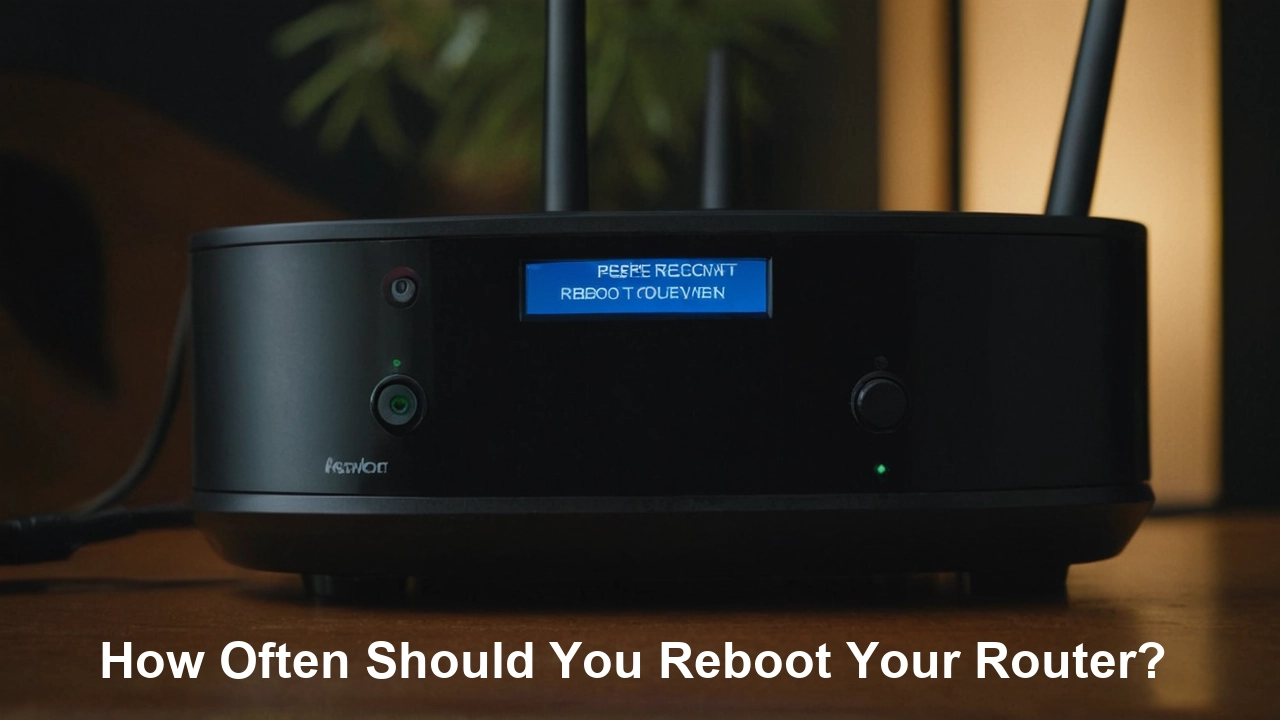
Internet connection security is a critical necessity in the era that we live in as a result of which an uninterrupted flow of the internet services offered is vital. For schools and businesses that are remotely working or studying, or for users who complete their work from home or watch videos and stream, a slow unstable Internet connection is quite a challenge. Probably the simplest process that can be practised and one that yields a lot of results is to restart your router.
Resetting a router might not sound like a very big deal, but it really can go a long way in improving the situation with your internet connection. Well, how often does one need to reboot its router? In this guide, you will be able to get the little things that you need to know all along so that your router can keep on working efficiently and give you a proper connection to the internet.
Reasons to Reboot Your Router
Before we dive into the frequency of rebooting, let's explore some reasons why you should reboot your router:
1. Resolve network issues: The easiest solution when it comes to network problems like slow internet or device connection is usually a simple reboot.
2. Improve security: Resetting a router frees up its memory and gets rid of security threats and possibilities of becoming breached.
3. Update firmware: Many manufacturers issue updates to enhance the user’s performance and, most importantly, security. Restarting your router after applying the changes by updating the firmware helps it implement these changes.
4. Clear cache and temporary files: Just like it happens with a computer, rebooting the router enables getting rid of the developed cache and temporary files that can be located in the router.
When to Reboot Your Router
Having established why rebooting is important let us look at when it should be done now that you know why rebooting is important.
1. Regularly: One should always remember to restart their router at least once a week to ensure that it stays in good working condition and that it supplies the best internet connection within the house.
2. After firmware updates: Equally noted, ensure that you reboot your router after updating its firmware to make these changes effective and more secure.
3. When experiencing issues: If you encounter some connectivity problems or slow internet you just need to reset your router.
4. During power outages: If there is a power failure, the router needs to be restarted so that it is aligned with your ISP’s network, and your devices are reconnected.
5. After adding new devices: Before that, after any change that is made in your house such as getting new gadgets such as smart home gadgets, gaming consoles and others, it is advisable to reboot your router just in case the new devices are to connect and communicate with your network.
How to Reboot Your Router?
Resetting a router is something like this; Here's how to do it for different router models:
1. Standard process: One of the most common ways to reset your router is to take out the power cord from the router and plug it back in, wait for at least 30 seconds, then plug the power cord back into the router and wait for the router to reconnect to the internet.
2. Router-specific steps: Often there is some unique reboot process associated with a particular model, so it is recommended to check the manual or the official website of the company that created the router for these tips.
However, you should realise that not every router is the same, so the pointers highlighted here might be slightly different on your unit.
This therefore leads us to look at some mistakes that people make when rebooting their router.
While rebooting your router can provide numerous benefits, there are a few common mistakes to avoid:
1. Over-rebooting: Resetting your router often may lead to early deterioration of your router and in most cases, rebooting will not solve connectivity problems.
2. Not waiting long enough: Simply wait for the router to fully start before reconnecting the devices or attempting to connect to the internet. The slicer strategy might cause the router not to sync at all if the process is hurried through.
3. Forgetting to save settings: It will be useful to remember to save the changes before rebooting, whether you are working with the firmware update or changing settings in general.
Conclusion
Resetting your router is one of the most important activities you must attend to enhance your experience with a connection. If therefore you follow the guidelines and the best practices highlighted above, then you are most assured of a good stable, reliable and secure connection. It is always important to restart your router at least once a week, after having received new firmware, lose power, or add new devices to your network. This way, you live a comfortable internet experience without network problems and security challenges that come in between.






